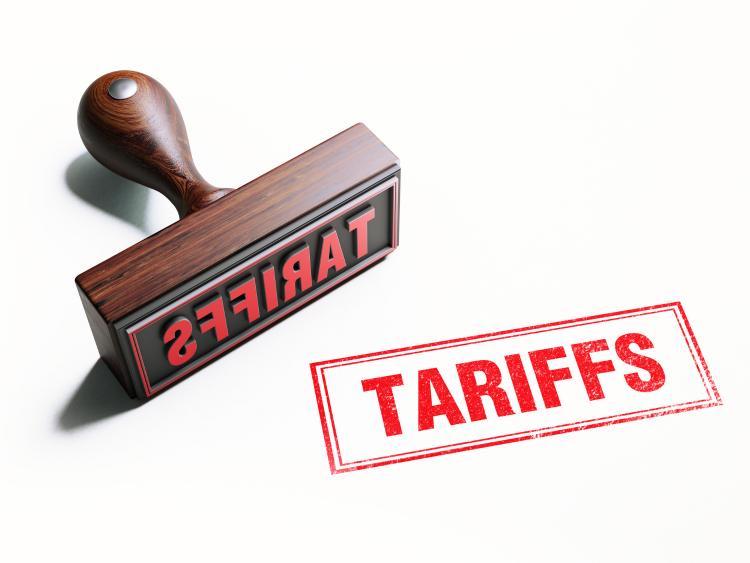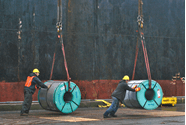Steel Markets

AGC: Highway Construction Safety and Funding at Risk
Written by Sandy Williams
June 30, 2020
Construction employment increased in 329 of 358 metro areas between April and May, reports the Associated General Contractors of America. A significant amount of construction takes place on the nation’s highways where a new AGC survey finds that worker safety is compromised by drivers exceeding the speed limit and paying more attention to their phones than driving.
An annual survey conducted by AGC and HCSS found that two-thirds of construction firms had at least one crash in the past year at a highway work zone, while 33 percent reported five or more crashes.

The COVID-19 crisis made it somewhat safer for highway construction workers due to fewer vehicles on the road. Barriers could be extended and left in place, providing a better safety buffer for workers. The reopening of the economy has made those improved precautions less practical as traffic volumes increase.
During an AGC/HCSS webinar on Tuesday, panelists noted that although traffic volumes were down, incidents of speeding continued. Pennsylvania has initiated a new program to reduce speed in work zones by capturing speeders on camera and issuing fines. So far 30,000 violations were issued in Pennsylvania since initiation of the program in March. Drivers who exceed the speed limit by 11 miles per hour are issued a written warning on the first offense, a fine of $75 on the second offense and a fine of $150 on the third offense. Some drivers have been caught blowing through zones at 90 mph.
The program is not about collecting fines, but about educating drivers and ensuring the safety of construction workers, said Jason Koss, Director of Industry Relations, Constructors Association of Western Pennsylvania. Cameras are used only in active work zones and are turned off when workers are done for the day. There is recent evidence that the program is working.
Survey participants were asked what is making work zones less safe compared to a decade ago. Only 7 percent indicated an increase in traffic, but 81 percent said the use of cellphones while driving was making work zones less safe. Weaving on the highway in the past may have been attributed to drunk driving, but now it is more likely to be the result of drivers looking at their phones. Stricter cell phone rules are necessary to improve safety, said 18 percent of those responding to the survey.
The COVID-19 crisis allowed some contractors to speed up highway construction jobs due to less traffic, but it also meant a tremendous drop in gas tax revenue, diesel tax revenue from trucks, and from toll road receipts, said AGC Chief Economist Ken Simonson. In the medium and long term there will be less work for contractors to do, he said, noting that in some states contract letting for projects has been delayed.
At least 13 states have either canceled or delayed letting due to low revenues. AGC is advocating that Congress work to pass legislation to replenish DOT budgets, reauthorize the five-year highway funding bill and pass a comprehensive infrastructure bill soon.

Sandy Williams
Read more from Sandy WilliamsLatest in Steel Markets

CMC looks beyond Arizona micro-mill woes to long-term viability of construction mart
Despite the economic and geopolitical upheaval of the last five years, CMC President and CEO Peter Matt points out that the construction market has been an essential element of the way forward.

US importers face stricter rules under revamped S232 tariffs
“CBP expects full compliance from the trade community for accurate reporting and payment of the additional duties. CBP will take enforcement action on non-compliance," the agency said in a March 7 bulletin.

Steel exports rebound in January
US steel exports recovered to a five-month high in January after having fallen to a two-year low in December. This growth follows four consecutive months of declining exports.

Construction spending drops marginally in January
Construction spending edged down slightly in January, slipping for the first time in four months. The US Census Bureau estimated spending at a seasonally adjusted annual rate of $2,196 billion in January, down 0.2% from December’s downward revised rate. The January figure is 3.3% higher than a year ago. January’s result, despite the slight erosion, […]

HVAC equipment shipments slow in December but strong annually
Shipments of heating and cooling equipment in the US fell to an 11-month low in December, according to the latest data released by the Air-Conditioning, Heating, and Refrigeration Institute (AHRI).
